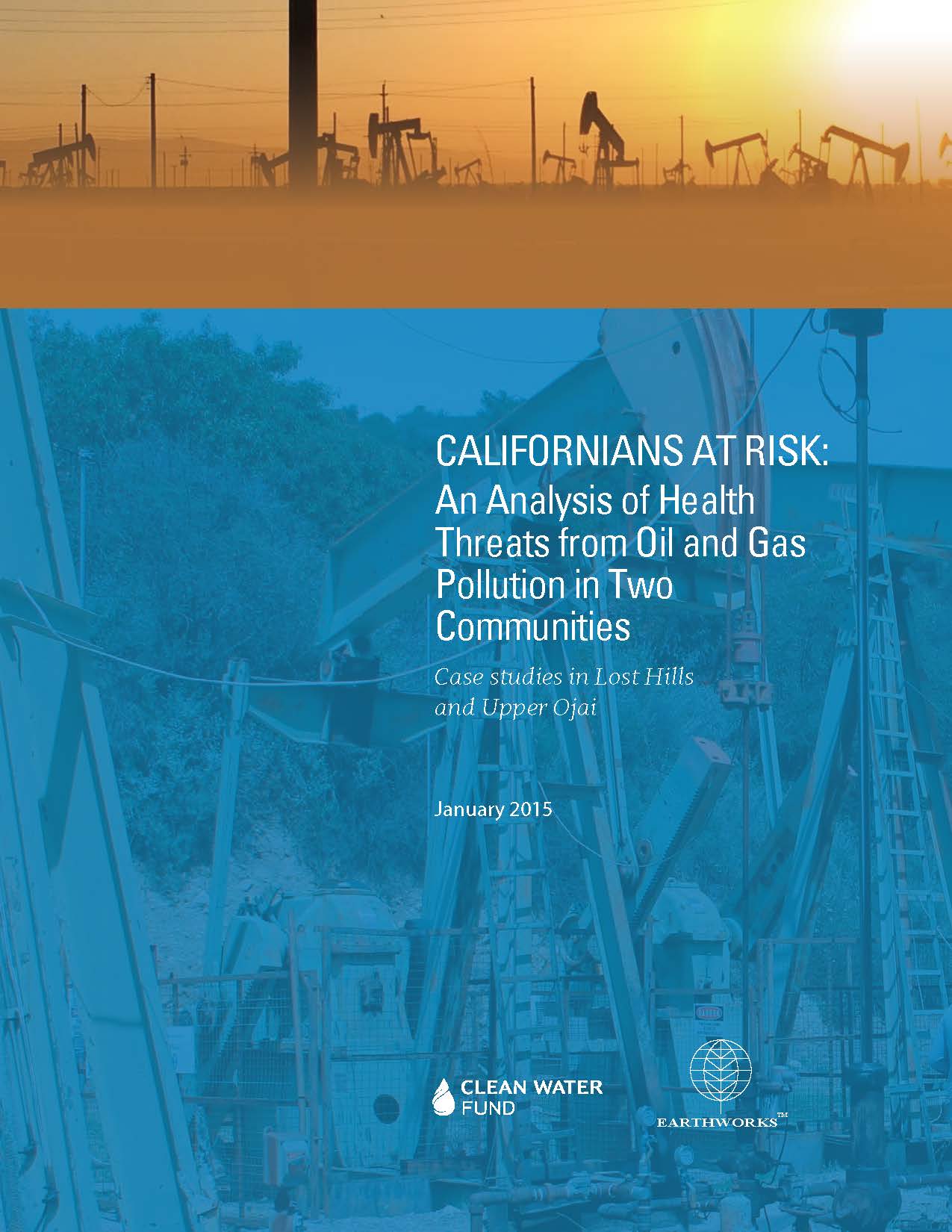To the more than 5 million Californians living within a mile of oil and gas wells, the Golden State is oil country. Tens of thousands of active wells produce nearly 200 million barrels of oil every year, making California the third largest oil producing state in the country. Despite the fact that so many people live near oil and gas facilities, neither the industry nor the State have adequately investigated the impacts on public health. No extensive studies have been conducted to determine how communities and people living close to oil and gas in California are affected.
To understand the impacts of oil and gas development on California communities Clean Water Action and our allies at Earthworks studied health and air contaminants in two communities in the heart of oil country - Lost Hills in Kern County, and Upper Ojai in Ventura County.
Using a combination of air sampling data and information from health surveys, we explored whether populations living near oil and gas production are being exposed to potentially toxic chemicals associated with the production and transportation of oil and gas.
Key findings of the study:
- The communities of Upper Ojai and Lost Hills are being exposed to air contaminants that are typically associated with air emissions from oil and gas development.
- FLIR (infrared) camera filming revealed visible emissions from several oil and gas facilities near the two communities.
- Air sampling revealed the presence of 15 compounds known to have negative effects on human health, as well as 11 compounds for which no health data is available.
- The air sampling and health surveys show that residents in both communities report odor issues likely related to the oil and gas development close to their homes.
- These contaminants may negatively affect the health of the communities and pose a serious risk of long-term exposure.
- The health surveys we conducted in both communities show evidence of health effects that is consistent with contaminants that are associated with oil and gas and which were detected through air sampling, such as nosebleeds, headaches, sinus problems, and skin rashes.
The frequency and number of samples were limited, so the results of this investigation are better seen as a snapshot of air emissions and a clear warning sign of problems, not as a comprehensive analysis of the problems.
The findings of the assessment provide communities with information on the types of air contaminants they are being exposed to, the known effects of those contaminants on public health, and the levels of exposure. The data provides a basis for these two communities, and others living in close proximity to oil and gas development, to request further investigation into health impacts associated with oil and gas production, and to push policymakers and regulatory agencies to address their health concerns.
Related Publications
Stay Informed
Get the latest updates and actions:
Thanks for signing up!
There was a problem processing your signup. Please try again.
